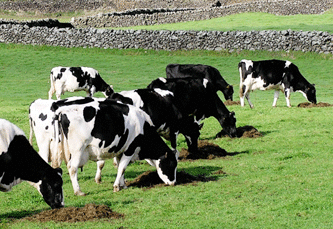 COUNTRY OF ORIGIN
COUNTRY OF ORIGINVacas lecheras en pastoreo, un modelo de agricultura sostenible
Resultados
El resultado más significativo obtenido a través de este modelo de manejo fue el permanente desarrollo de la zootecnia en los últimos 30-40 años.
Ya sea en una isla como S. Miguel (la mayor de las Azores) como en S. Jorge o en Terceira, los productores de leche (asociados en varias cooperativas de productores y asociaciones de clase, responsables por el asesoramiento técnico y las prestaciones de otros servicios), son los cimientes de la economía regional, funcionando también como precursores de otros sectores de la economía como los servicios y el turismo.
Del archipiélago siguen hacia el Continente, queso, leche UHT, leche en polvo y mantequilla. Un caso particular e importante, derivado de la producción de leche en las Azores, es el queso de S. Jorge (una de las cinco islas del grupo central del archipiélago), producido de manera tradicional con leche cruda, que por sus características particulares e importancia económica , recibe la Denominación de Origen Protegida (DOP). Este queso, además de ser exportado hacia Europa, tiene también un gran mercado en los Estados Unidos y en Canadá, donde vive una gran comunidad de azorianos.
Es fundamental hablar de las considerables ventajas que este modelo de mecanización ofrece a la calidad de vida del agricultor azoriano. Un criador con un efectivo de 50 vacas lecheras, tiene normalmente en su explotación una máquina de ordeño móvil de ocho puntos de ordeña reduciendo así sus dos operaciones de ordeño diarias (una en la mañana y una en la tarde) a apenas 2-3 horas/día. Es un tiempo relativamente bajo si se compara con los tiempos usados por un criador con sala de ordeño fija, que es una estructura con un costo de implementación mucho más alto al valor de adquisición de los equipos móviles.
DESCARGA EL BROCHURE PDF
Inglés (0.8 MB)Español (0.8 MB)
Portugués (0.8 MB)
SÓLO TEXTO
•El pastoreo de vacas lecheras en la práctica







